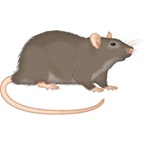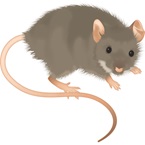Species category: Rodent
Scientific Name: Rattus norvegicus
Family: Muridae
Description
Adults are typically 180-250mm long. They have a tail length of 160-210mm; slightly shorter than their bodies. Droppings can be useful for identification purposes; theirs are formed like an olive pit, ending in a point and are approximately 20mm long. The upper body is brown with a white-yellowish underside.
Behaviour
Norway rats can breed throughout the year if conditions are suitable.
Region
Originating from Central to East Asia, they are widespread in the Philippines.
Habitat
They are often found outdoors, especially in sewers, drains, and rubbish dumping area. They will also climb into buildings and structures when food sources are no longer readily available.
Risks
Carriers of over 45 types of diseases, they can contaminate water, food and the environment. Rats can cause direct food losses to field crops, stored food, and food production chains.
The Norway Rat has a constant need to gnaw on tough inedible materials. This helps to control their rapidly growing incisor teeth. They will chew on anything that comes in their path causing considerable destruction. They also urinate and produce droppings frequently, contaminating everything they come into contact with.


